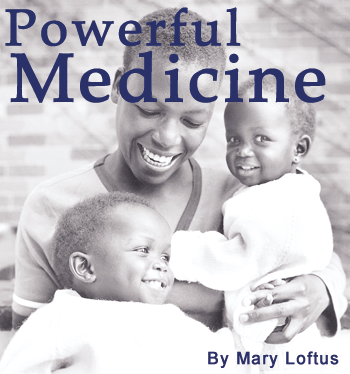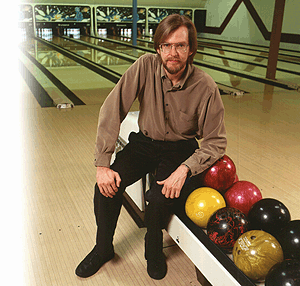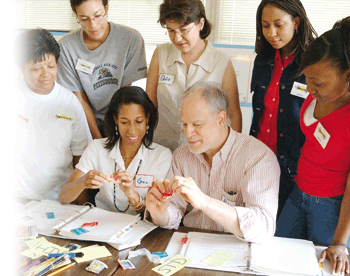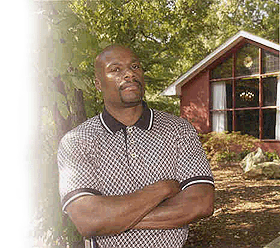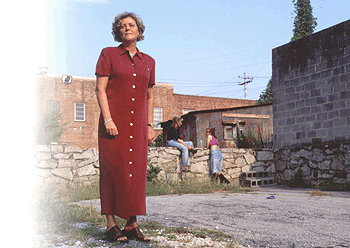Claire Sterk, chair of the RSPH Department of Behavioral Sciences and Health Education (BSHE), has studied some of the most troubled residents of the inner city—drug users, prostitutes, and the homeless—for nearly two decades. She says their feelings of alienation and hopelessness contribute to self-destructive behaviors that cause HIV and other sexually transmitted diseases. Her search for solutions led Sterk to establish the Health Intervention Project (HIP), a safehouse in “The Bluff,” one of Atlanta’s roughest neighborhoods. Here, women at risk for HIV—many, drug users and prostitutes—gather regularly to share cereal in the kitchen, watch videos, and cook dinner together. Counselors also offer HIV/AIDS prevention counseling and health information. Many women who completed the intervention program were deeply moved by the certificate they received at the end. “I can’t tell you how powerful that was,” says Sterk. “Some had tears in their eyes. They said it was the first certificate they had ever received. And when they walk down the street now, they know each other from a context other than getting high together.” This ancient strategy—becoming part of a communal group—may well be one of the best survival techniques society has to offer. While searching for ways to slash the spread of HIV/AIDS, social and behavioral scientists at RSPH have found that bolstering this sense of belonging can be a powerful intervention. In an age of high-tech solutions to diseases, it is almost poetic that one of the best ways to prevent the infectious spread of this insidious virus, which has already killed more people than died in both World Wars, is to embrace the motto “United we stand. Divided we fall.” As public health journalist Laurie Garrett said in a lecture at Emory last year: “AIDS became a medicalized problem. This shifted the epidemic from one viewed as a collective disaster to one seen as an individual treatment paradigm. . . . Medicalizing public health problems can be disastrous.”
A capital investment
Social capital levels have already been correlated with public health variables like violence and mortality. But after reading Bowling Alone, Holtgrave was curious to see if there was a relationship between social capital and STD levels. By comparing Putnam’s state levels with CDC surveillance measures of syphilis, gonorrhea, chlamydia, and AIDS, he found social capital to be a significant predictor of each disease, as well as of risky sexual behaviors, such as early sexual experience and having multiple partners. “That’s why small, community-based intervention groups work so well,” says Holtgrave. “They allow people not only to share information about how the virus is transmitted and what you can do to protect yourself, but friends and peers are also able to reinforce for each other that it’s important to protect yourself.” Also, with increased levels of social capital, Holtgrave says, risk behaviors go down and access to health services go up. Taking on a goal as ambitious as raising a state’s or community’s social capital doesn’t come cheaply, admits Holtgrave, but the losses would be quickly recouped in reduced treatment costs for AIDS victims. A greatly expanded national HIV/AIDS prevention effort is essential, says Holtgrave, if the US government plans to fulfill its mandate of cutting the 40,000 new AIDS cases a year in half by 2005—and to protect the estimated 5 million Americans still at risk of HIV. In a massive study published in the July 2002 issue of the American Journal of Preventive Medicine, Holtgrave outlines the need to spend millions more on domestic AIDS prevention: from an additional $817 million for brief interventions up to $1.85 billion for multi-session, small group interventions. Since the estimated lifetime cost of care and treatment for one HIV-positive individual is about $195,000, these initial investments would pay for themselves if just 5,000 to 12,000 new infections a year were prevented. Now, less than 7% of the HIV budget in the United States is spent on prevention measures.
Custom tailored Husband-and-wife team Ralph DiClemente and Gina Wingood, for example, focus on reducing HIV-risk behavior in adolescents, especially African-American females, through small groups with peer facilitators. “We contextualize the message,” says Wingood, associate professor of BSHE. “Our programs include an emphasis on ethnic pride, self-image, and self-awareness, as well as sexual health.” In their groundbreaking HIV prevention program SISTA (Sisters Informing Sisters About Topics on AIDS,) which DiClemente presented in Barcelona, and its offspring, SIHLE (Sisters Informing, Healing, Living, and Empowering), the girls learn about condom use and AIDS transmission. They also role-play and read poetry, such as Maya Angelou’s Phenomenal Woman.
Such gender- and culture-sensitive programs are effective, Wingood says, because they not only increase HIV-prevention skills, like condom use, but also result in positive changes in participants’ assertiveness, body image, and self-esteem. The girls, even years down the road, are better able to communicate their desires, manage interpersonal conflicts, and cope with outside pressures: all precursors to being able to take charge of one’s sexual health. “Unfortunately, AIDS strikes many women during their young adult years—most women living with AIDS are between 20 and 44,” says Wingood, meaning that they probably acquired the virus while in their teens or early twenties. A testament to its effectiveness is the fact that the CDC has adopted SISTA as a boxed kit—including manuals, a video, pre- and post-tests, poetry, games, and homework—for use by community organizations and social service agencies.
“The more you can find out about the factors that predispose someone to a disease, the better you can inform and motivate them to do something to avoid it,” says DiClemente, Charles Howard Candler Professor of BSHE.
The power of a captive audience Torrance Stephens, research assistant professor of BSHE, assisted in a condom distribution campaign among commercial sex workers in Lagos state, Nigeria, and was the recipient of a CFAR developmental award for his studies using hip-hop music as a prevention tool among students.
Ronald Braithwaite, associate professor of BSHE and author of Prisons and AIDS: A Public Health Challenge, has studied and worked extensively with prison populations in America and South Africa, teaching inmates to counsel small groups of their peers about HIV and substance abuse prevention. “As soon as inmates are released, one of the first things they do is have sex, and they often go back to alcohol or drugs,” he says. “While they are inmates, they really are a captive population, so we have a unique opportunity.” Ideally, he says, prevention efforts would include supplying inmates with condoms while they are incarcerated, a practice that is fairly routine in South Africa and very rare in the United States.
The will to change Slowly, as the women gathered, talked among themselves, and spoke with counselors, they set out to reclaim control, although not always in ways public health workers might have envisioned. “One woman decided she would smoke crack only with other women, so that she wouldn’t then have unsafe sex. That may not fit our traditional view of an intervention, but at least it took care of some of the risk,” Sterk says. “None of us, in our lives, are able to address all of our problems at once.” Society’s collective motivation to combat AIDS is crucial as well, said RSPH Dean James Curran in a senior lecture at the Barcelona conference this past July.
Related articles: CFAR: Emory's leading weapon in the war on AIDS
Going Places | Fighting Global Violence | Commencement | Alumni Weekend | Class Notes 2001-2002 Donor Report | Rollins School of Public Health Copyright © Emory University, 2003. All Rights Reserved. Send comments to hsnews@emory.edu. |
